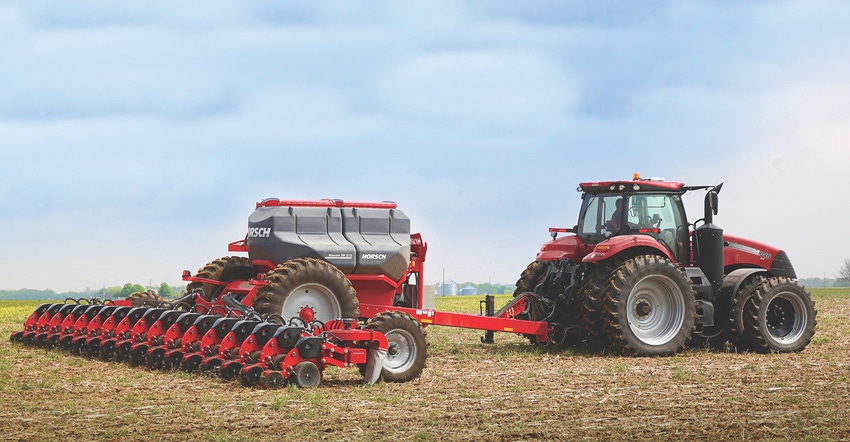
If you haven’t prepped your planter for spring, Jeremey Hughes says you need to start today. It’s that critical. But Hughes, product manager for Horsch and a farmer himself, also suggests looking beyond the planter.
“There’s a lot of hidden revenue that many of us could pick up just by paying attention to detail and doing things a little differently than in the past,” Hughes says. “It can be some of the biggest ROI we capture all year. A lot of it doesn’t require more than thinking, observing and spending a little extra time getting out of the cab and making adjustments.”
ROI boosters
Here are places to start if you want to boost return on investment without spending major bucks, Hughes says:
• Tractor prep. Get the tractor ready for planting season too. Start with the batteries and electrical system. Today’s modern planters have much higher electrical requirements than earlier planters.
“Are you getting the proper voltage in your system?” Hughes asks. “If it’s low or variable, it may not only interfere with planter systems, but could also affect GPS and steering systems.”
• Hydraulic capacity. Some planter setups today require a lot more hydraulic power than before. If you occasionally switch tractors on your planter, make sure you know how much hydraulic capacity each tractor has, and know in advance if it should handle planter hydraulic requirements.
• GPS and computer problems. Hughes often helps get a new planter started. “On nearly half the startups, there’s some sort of problem with steering or GPS the first day,” he says. “Maybe it’s trouble setting an A-B line for GPS. Or maybe the tractor and planter software aren’t talking to each other correctly. These are big-time killers. Some of these issues could be resolved ahead of time, before it’s a beautiful day to plant.”
• Electrical issues. Electrical issues are one of the things you hope to uncover while prepping the planter and tractor, Hughes notes. “These typically aren’t quick, easy problems to resolve. It’s much better if you’re spending your time resolving them when it’s still cold, wet or even snowing outside, rather than when it’s 75 degrees F, sunny and soils are dry.”
• Hidden revenue. Hughes offers this example. “We’ve found that 60% to 70% of farmers, according to surveys and studies, tend to plant soybeans too shallow. It can impact stands. If they dropped seeding depth a half to three-quarters of an inch, they might increase yield 5 to 8 bushels per acre.
“If you farm 1,000 acres, that’s like finding 500 to 600 $100 bills just sitting there for the taking. It doesn’t cost anything except time to get off the tractor, dig and adjust settings.
“The time to do it is when you first start, not after you’ve planted 250 acres. These are the kinds of little things we can all do to boost ROI with little or no upfront expense.”
About the Author(s)
You May Also Like




